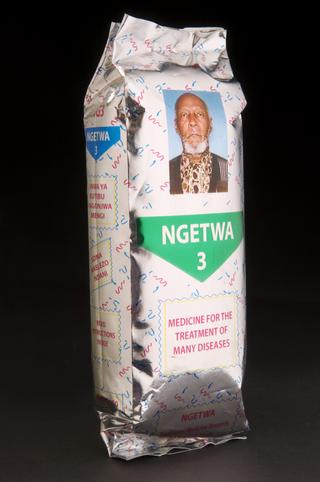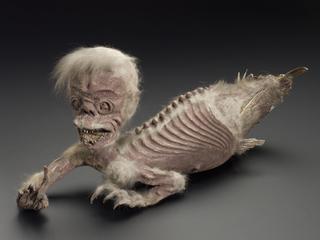




Calf's tooth amulet, to facilitate teething, Lovett collection, from London, English, 1871-1915
The growing influence of biomedicine in the 1800s did not necessarily replace established forms of treatment based on belief and superstition. What could be referred to as folk medicine – customs that often went back generations – continued to be practised. For example, some believed that carrying or placing an animal’s tooth in a child’s bedroom could protect them against teething pains.
The tooth was a gift to the Wellcome collections in 1916 from Edward Lovett (1852-1933), a collector of British amulets and charms. It is pictured here with other teething amulets, a piece of flint (A132464), a piece of turf (A132465), and a necklace of woody nightshade (A132471).
Details
- Category:
- Ethnography and Folk Medicine
- Collection:
- Sir Henry Wellcome's Museum Collection
- Object Number:
- A665423
- Materials:
- tooth, calf's
- Measurements:
-
overall: 51 mm x 16 mm x 13 mm,
- type:
- tooth




